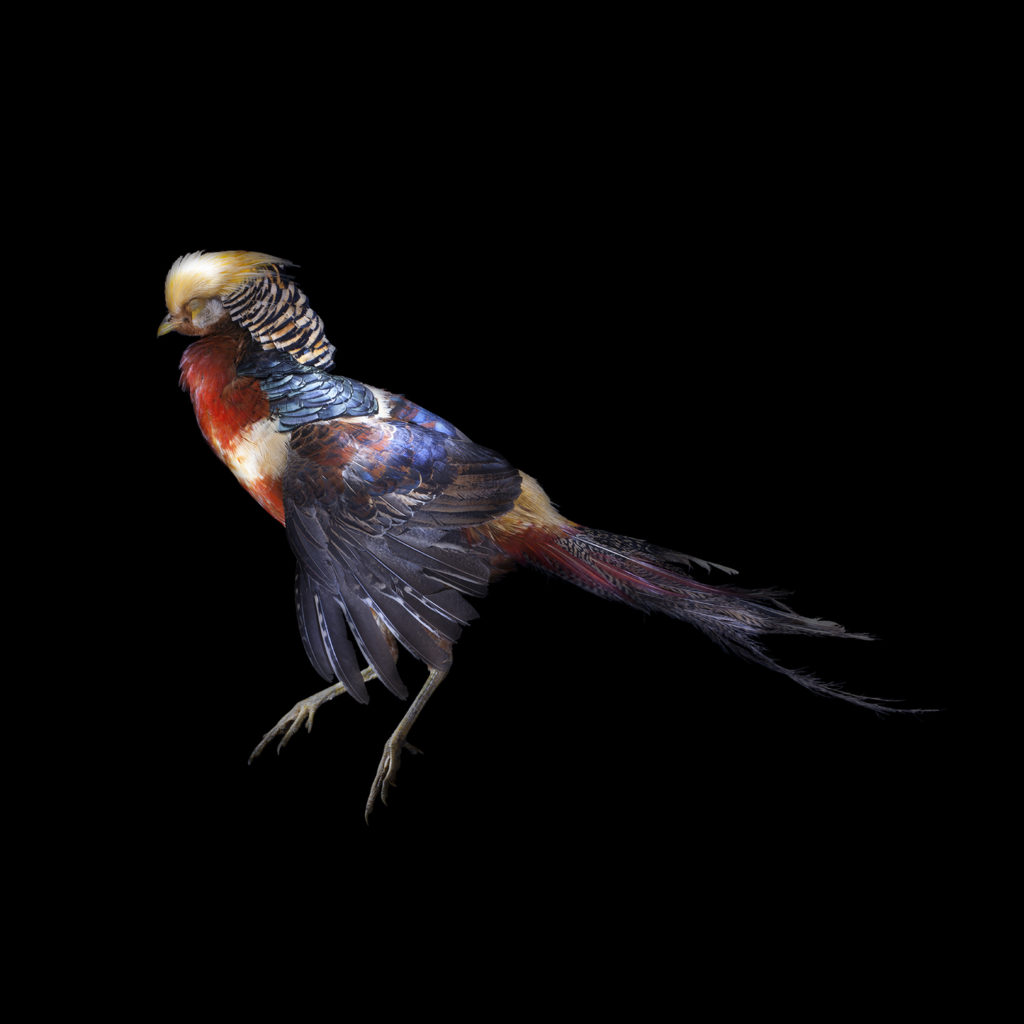Tomofumi Nakano
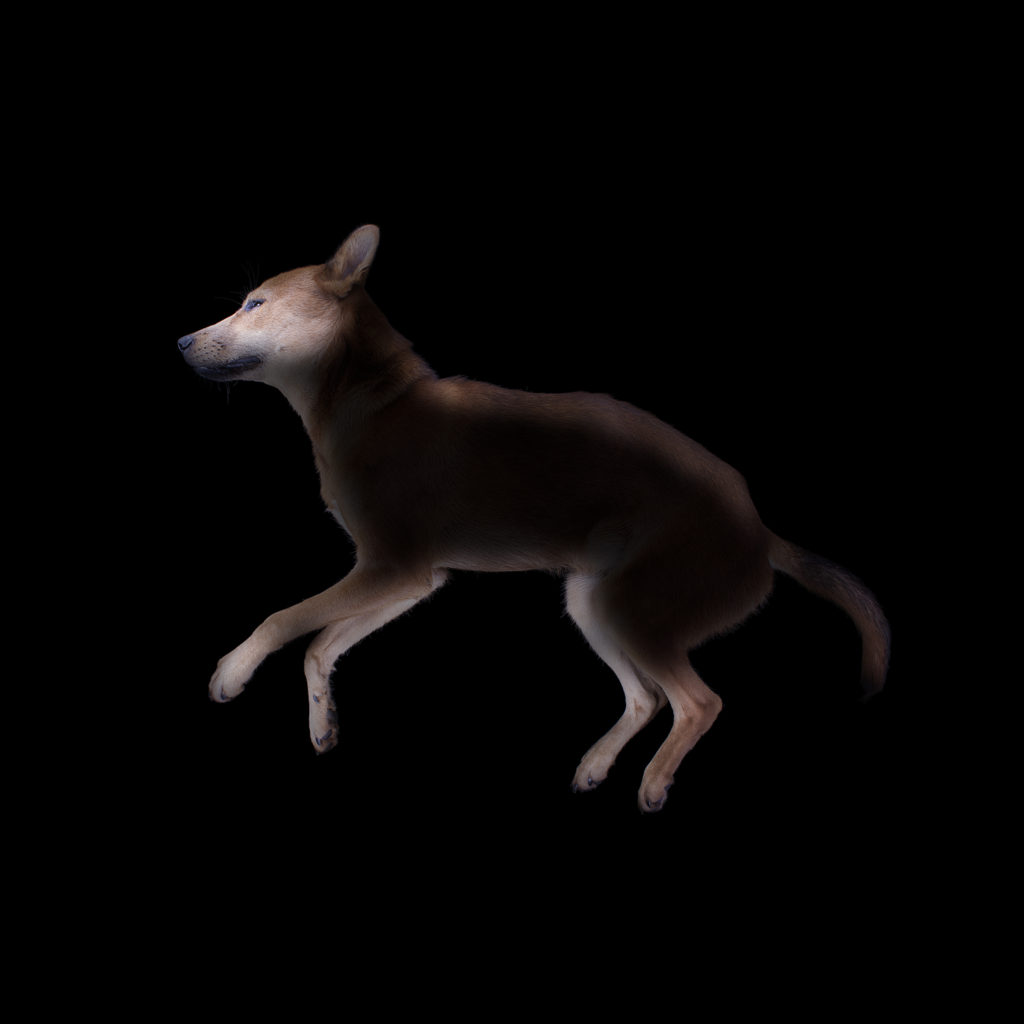
食材としてのイヌ・韓国 Dog to eat in South Korea (Gibier-The dead animal portrait)
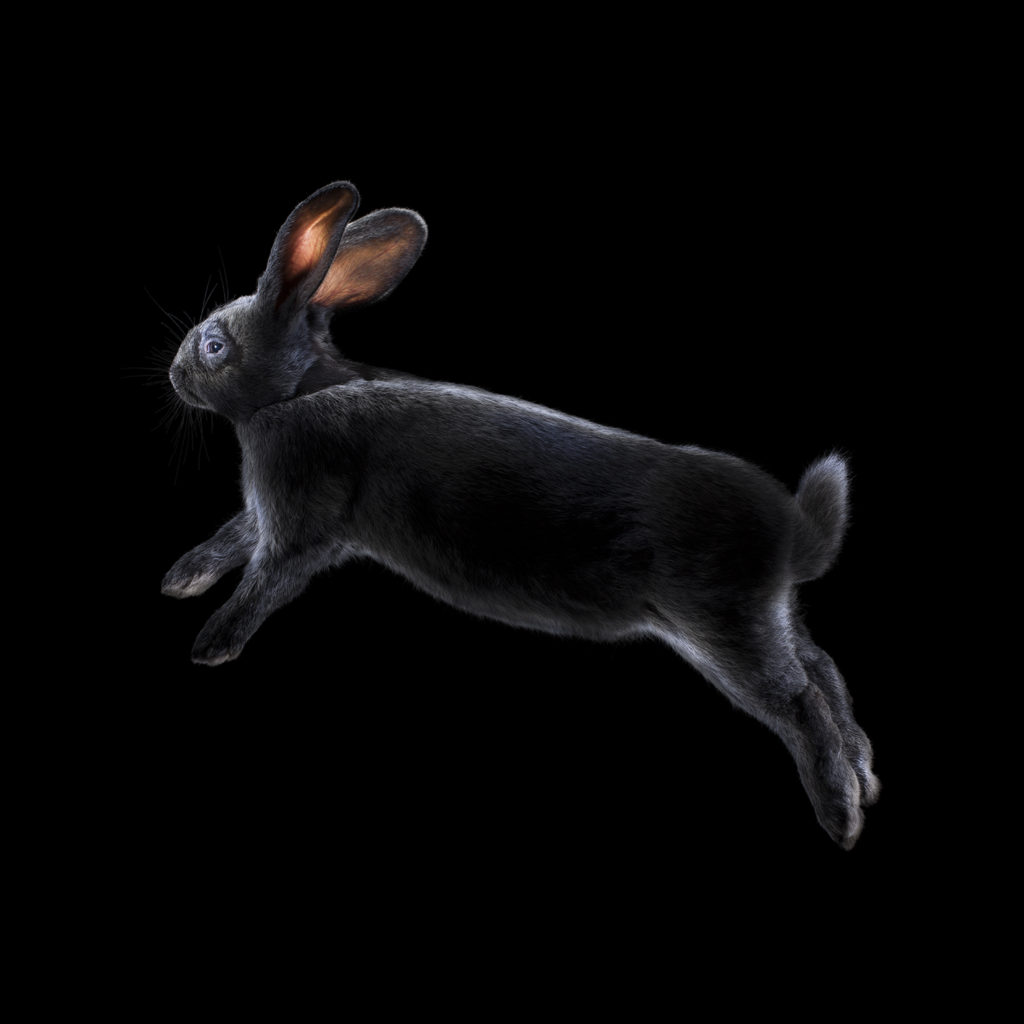
食材としてのウサギ・フランス Rabbit to eat in France (Gibier-The dead animal portrait)
Tomofumi Nakano, an artist from Hyogo Prefecture, creates artworks with a critical perspective on society that he has gained from his experience as a journalist. The two series of works presented
in this exhibition, “Gibier-The dead animal portrait” (Gibier) and “E-commerced Animals” (mail order animals), deal with the theme of animal carcasses as food, encouraging a dialogue between
people with different food cultures and providing an opportunity for the viewer to think about animal death.
兵庫県出身のアーティスト中野智文氏は、ジャーナリストとして活躍した経験から培った社会への批評的な視点を持ってアート作品を制作しています。この度の展覧会で紹介する彼の2つのシリーズ作品「Gibier-The
dead animal portrait」(ジビエ)と「E-commerced Animals」(通販動物)は、食材としての動物の死体をテーマとしており、異なる食文化を持つ人たちの対話を促し、また動物の死について鑑賞者に考える機会
を提示しています。
INTERVIEW
-Firstly, will you tell us how you started photography?
I was born in 1978 and after my graduation from university, I worked as a newspaper editor and a news photographer. From around 2009 to the present, I have been creating artworks from a critical
perspective on society that I have cultivated through journalism. I believe that I am better suited to stimulate people’s thinking through artworks using photographs rather than straightforwardly
conveying events in the world through news photography.
In 1999 while I was studying law in university, I became interested in photographs when I saw a movie about a photojournalist who covered the Cambodian Civil War(1970-1993). In my 20’s, I was
especially influenced by one of the photojournalists Hiromi Nagakura(1952-). I have admired him who supported people in trouble such as building a school in the war-torn country, Afghanistan.
When in my teens, I really liked drawing or crafting while at the same time I was interested in social justice or journalism. So I remember I had trouble choosing either law or art as my career path.
As I learn more about photographs, I came to think both journalism and art can be possible as my future career.
In my own project, I have also covered the Lebanon War in 2006 and Iraqi refugees in 2007, however I remember how difficult it was to convey “what I saw forsthand” to “people who had never
seen it firsthand” with the kind of impact that I had received there.The pain of the Lebanese child whose fingers were blown off by bomb, and the suffering of Iraqi people displaced from their
homeland and waste away waiting for refugee applications…
Because of these experiences, one of the indicators of my work is how I can contribute to society through my work.
−まず、写真を始めたきっかけを教えていただけますか?
1978年生まれの私は大学卒業後、新聞の編集者や報道カメラマンの仕事を経て、2009年頃より現在までジャーナリズムで培った社会への批評的な視点でアート作品の制作を行っています。報道写真で世の中の出来事を
ストレートに伝えるより、写真を使ったアート作品を通じて人々の思考を促す方が自分には合っていると考えています。
1999年に法律を専攻していた大学生時代にカンボジア内戦(Cambodian Civil War 1970-1993)を取材した「フォトジャーナリスト」を題材にした映画を見て「写真」に興味を持ちました。私が20代の時にはフォトジ
ャーナリストの長倉洋海さん(1952-)には特に影響を受けたと言えます。戦禍にあったアフガニスタンに学校を建てるなど苦境にある人たちを支援する姿に憧れました。中学生、高校生のときには社会正義やジャーナ
リズムに関心があったのですが、幼少期より絵画や工作が好きだったこともあり、大学進学にあたり法律か美術を選ぶのに悩んだ経緯があります。写真について知っていくと「ジャーナリズム」も「アート」も可能だと
思えたのです。
自分自身のプロジェクトでも2006年にレバノン紛争(2006 Lebanon War)の戦災地や2007年にイラク難民を取材したのですが現地で「自分が直接見たこと」を自分が受けたような衝撃をもって「直接見たことがな
い人」に伝えることが難しかったことを思い出します。爆弾で手指を吹き飛ばれたレバノンの子供の痛み、故郷を追われ難民申請を待ちながら無為に過ごすイラクの人たちの苦しみも。こういった経験を経たからこそ、
作品作りを通していかに社会に貢献できるかどうかが一つの指標となっています。
-Where is the main base of your current activity as a photographer?
I am currently working in Hyogo, Japan. Although it is a regional city, “KYOTOGRAPHIE” and “Mt.ROKKO INTERNATIONAL PHOTO FESTIVAL”are held in the Kansai region, and you can see
exhibitions as installations that take advantage of the location. Around the newspaper company where I used to work, there were galleries of Nikon, Fujifilm, Minolta, and Canon, and
I was able to develop my eye for high quality prints.
In 2018, I had a solo exhibition at China’s largest photography festival, the Ping Har International Photography Festival, and all of the Japanese artists and curators who exhibited were related
to Kansai, which shows the richness of the soil that produces photographers as artists. It was impressive to line up my exhibition with the other renowned photographer Martin Parr (1952-) and
up-and-coming Chinese artist He Bo (1989-) at a photography festival in a world heritage city with 200,000 visitors.
−写真家としての現在の活動拠点はどちらですか?
現在は兵庫県を拠点に活動しています。
地方都市ですが関西には「KYOTOGRAPHIE 京都国際写真祭」(2013-)や「六甲山国際写真祭」(Mt.ROKKO INTERNATIONAL PHOTO FESTIVAL 、2013-2019の開催、兵庫県)があり場所を生かしたインスタ
レーションとしての展覧会を見ることができます。かつて働いていた新聞社の周辺にはニコン、富士フイルム、ミノルタ、キヤノンのギャラリーがあり高いクオリティーのプリント作品を作るための目を養うことが
できました。
2018年には中国最大の写真祭「平遥国際写真祭」で個展を行ったのですが、出展していた日本人アーティスト・キュレーターはみんな関西にゆかりがあり、アーティストとしての写真家を生み出す土壌の豊かさを表
していますね。20万人もの来場者がある世界遺産の街の写真祭で、著名な写真家マーティン・パー(1952-)や新進気鋭の中国人アーティスト何博(1989-)らと展覧会場を並べられたことは印象に残っています。
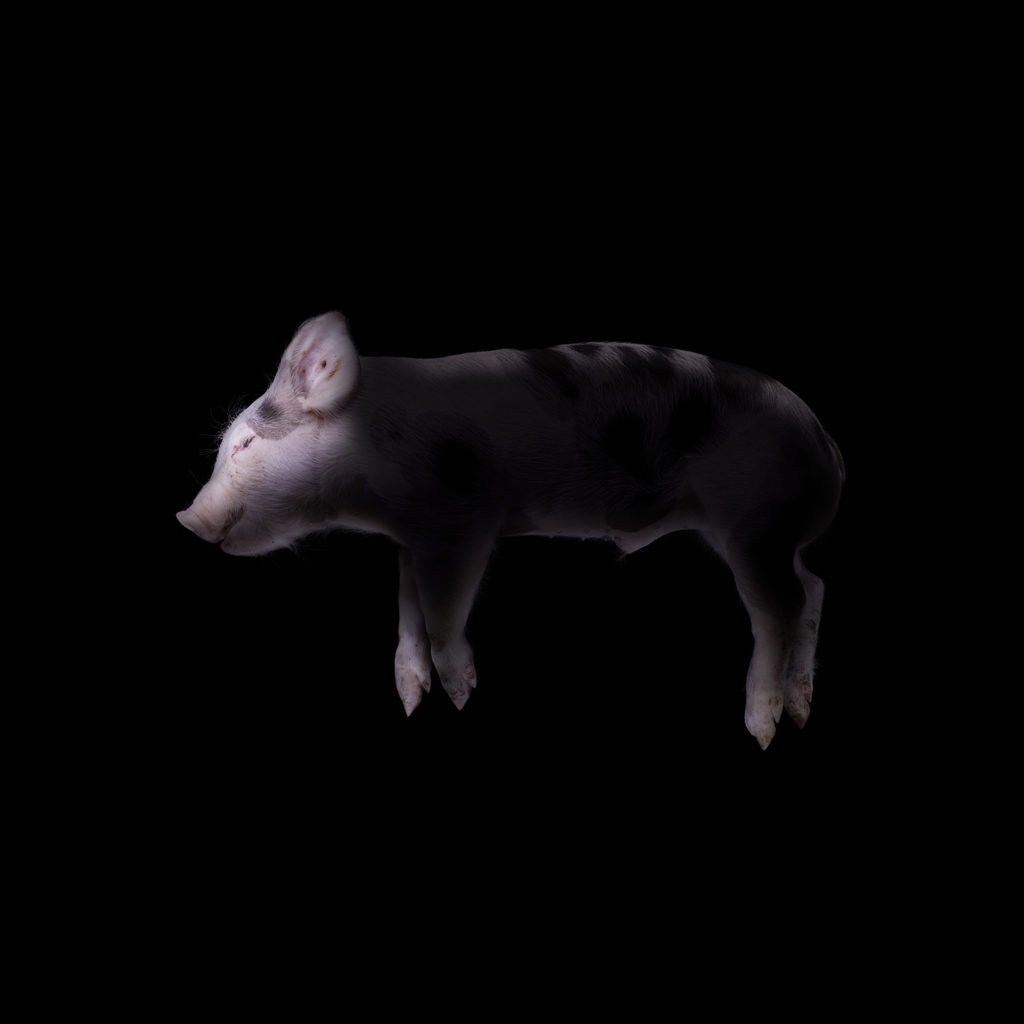
食材としてのブタ・ベルギー Pig to eat in Belgium (Gibier-The dead animal portrait)
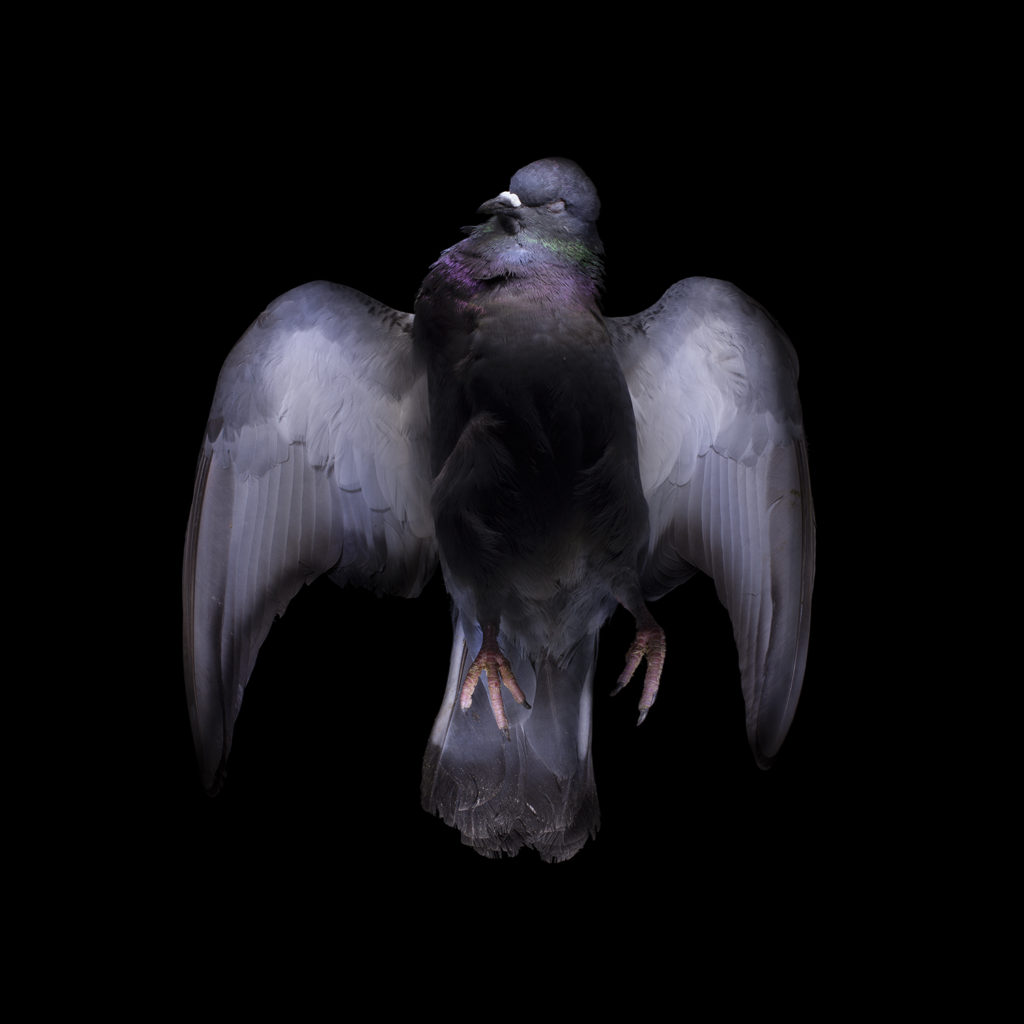
食材としてのハト・フランス Pigeon to eat in France (Gibier-The dead animal portrait)
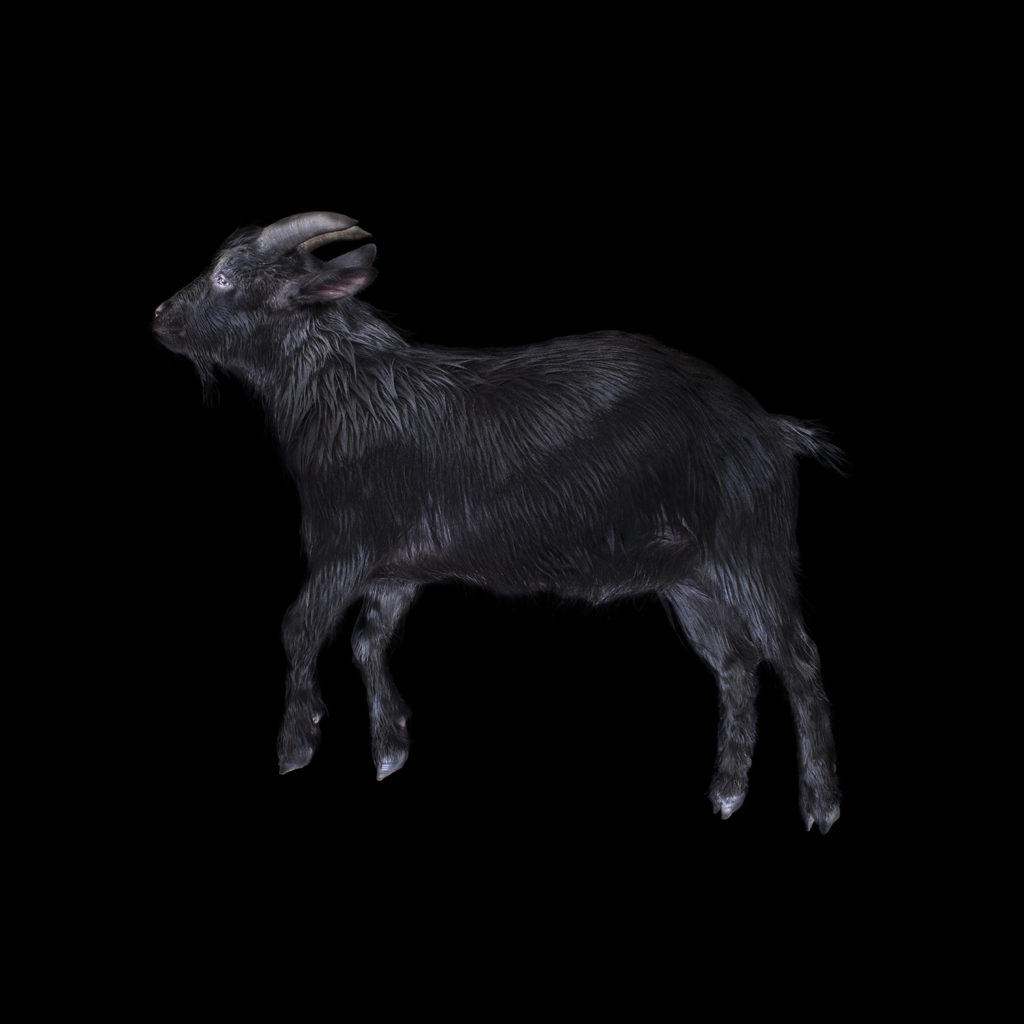
食材としてのヤギ・韓国 Goat to eat in South Korea (Gibier-The dead animal portrait)
-Please tell us about the selection of your photographic images for this exhibition.
This time, I would like to introduce two series of works, “Gibier-The dead animal portrait” and “E-commerced Animals”. Both projects use animal carcasses as subjects and are the result of
careful observation of food culture and consumer society.
The project “Gibier-The dead animal portrait”, which was started in 2009, attempts to stimulate a dialogue between people with different food cultures. Through the contrast between light
and darkness, I try to visualize the “mystery” of the animals themselves, expressing each animal as an equal creature. And I present my works as an opportunity for viewers to think about food
culture while looking at their own and others’ cultures in parallel, dispelling stereotypical notions of culture and customs like “This animal is food or this is pet…”
I was inspired to create this work in a French restaurant run by a friend of mine when I saw a corpse of a pigeon , which is not commonly eaten in Japan, packed in cardboard as food and I
thought “Why do we humans have to kill animals to eat them?”In this French restaurant in Japan, the well-dressed customers enjoy their meals, while in the kitchen, animals are decapitated
and bled as they are chopped up every time an order is placed. Customers don’t imagine such a thing. Even in ordinary life, when we pick up a pack of meat in the supermarket, it never occurs to
us that it is part of the carcass of an animal that once had a will. In this project I actually killed animals for food and then photographed, cooked and ate them. In some cases, due to danger
or other reasons, it was left to a professional.
For these works, I used a flashlight technique. Through studying of Christian religious painting, I have independently learned photographic methods to make objects appear “mystical” through
the action of light. At first glance, viewers will not be able to tell whether the animal is “dead or alive”. When you notice that an animal is dead, does it look like a mere carcass or does it have
value as food? It depends on the cultural background of the viewer.
I did this project not only in Japan, but also in Korea, France, Belgium and Spain in search of a culture of eating various animals. Of course, I took account of the food culture and customs of each
region. I hope that viewers from different backgrounds will start a dialogue in front of this work, like “What kind of animals do you eat in your culture?” Gibier is the French word for animal as
food acquired through hunting. Using a French culinary term that is highly regarded around the world, I expanded on this to create a work of animals as food.
The series ”E-commerced Animals” was created in 2016. I placed animal carcasses on wrapping paper that showed their “use” or “what those animals are” and photographed them. Does this
imply an overdone capitalism? Is it a symbol of the arrival of a convenient society? Or is it just the slaughter of animals? With these works, I am inviting the viewer to think about the modern
consumer society.
On the Internet shopping site Amazon, various “animal carcasses” are sold, and in our lives they are used in a variety of ways, from food and clothing to pet animal feed. These “animal carcasses”
can be brought to your home with one click. Sometimes in a frozen state. We believe that wrapping paper is useful not only to show the use of the animal carcass or what the animal is, but also
to spark the imagination of the viewer and make it more kitschy. All of these animals are legally purchased online.
−この度の展覧会で紹介させていただいている作品についてお聞かせください
今回は「Gibier-The dead animal portrait」(ジビエ)と「E-commerced Animals」(通販動物)の2作品を紹介したいと思います。どちらも動物の死体を被写体をとした作品で、食文化や消費社会を注意深く
観察したことから生まれた作品です。
2009年より制作を開始した「Gibier-The dead animal portrait」(ジビエ)は異なる食文化を持つ人たちの対話を促そうとしています。
食材としての動物の死体を、光と闇の対比によって、動物そのものが持つ「神秘性」をビジュアル化することで動物それぞれを対等な生物として表現し「この動物は食べ物である。ペットである」といった文化や習慣と
いった固定観念をいったん取り払い、そして改めて鑑賞者が自分や他者の文化を並列に見ながら食文化を考える機会として作品を提示しています。
この作品の制作のきっかけは、友人の営むフランス料理店で、日本では一般的に食べることのない「ハト」の死体が食材として段ボールに詰まっているのを見て「私たち人間はなぜ動物を殺してまで食べるのだろうか」
と疑問を持ったことです。この日本のフランス料理店では、着飾ったお客さんが食事を楽しむ一方、厨房では注文が入るたびに動物が首を切られ血を流しながらさばかれていきます。そんなことなどお客さんは想像だに
しません。一般的な生活でも私たちはスーパーマーケットでパックされた肉を手にするとき、それがかつて意思を持った動物の死体の一部であることに考えが及ぶことはないでしょう。このプロジェクトでは、私は実際
に食材としての動物を殺したあと、撮影、解体、調理して食べています。危険などの理由で場合によってプロに委ねることもあります。
またこの作品では懐中電灯を使った手法で撮影しています。キリスト教の宗教絵画を研究することによって対象物が光の作用によって「神秘的」に見えるよう撮影方法の研究を独自に重ねました。観賞者は一見して動物
が「死んでいるのか、生きているのか」見分けることができないでしょう。動物が死んでいると気づいた時、単なる死体に見えるのか食材としての価値を持つのか。それは鑑賞者の文化的背景によって異なってきます。
私は様々な動物を食べる文化を求め、日本だけでなく、韓国、フランス、ベルギー、スペインなどでこのプロジェクトを行いました。もちろん各地域での食文化、慣習に配慮しています。私はこの作品の前で観賞者同士
が「あなたの文化ではどんな動物を食べますか?」と異なるバックグラウンドを持つ人同士の対話が始まることを期待しています。「Gibier」(ジビエ)はフランス語で狩猟で獲得した食材としての動物を意味していま
す。世界中で高く評価されるフランス料理の用語を使い、これを拡大解釈して食材としての動物として作品制作を行いました。
「E-commerced Animals」(通販動物)は2016年に制作した作品です。インターネット通販で売られる動物の死体の「用途」または「その動物が何であるのか」を示した包装紙の上に配置し撮影した作品を作ってい
ます。この作品によって「行き過ぎた資本主義なのか?」「便利な社会の到来の象徴なのか?」「単なる動物の虐殺なのか?」と観賞者に現代の消費社会に対する思考をうながしています。
インターネット通販サイトの「アマゾン」では、様々な「動物の死体」が売られていますが、私たちの生活では食用、衣料用からペットの動物のエサなど様々に利用されています。これらの「動物の死体」はワンクリッ
クで自宅に運ばれてくるのです。ときには冷凍された状態で。包装紙は「動物の死体」の用途またはその動物が何であるのかを示すだけでなく、観賞者の想像力をかきたてたり、よりキッチュにしたりするのに有用だと
考えています。これら全ての動物は、合法的にオンラインで購入しています。
-What messages do you want to convey to viewers through these images?
In keeping with both “Gibier-The dead animal portrait” and “E-commerced Animals”, I am trying to offer the viewer an opportunity to reflect on the death of an animal. I think it’s dangerous to
dualize things into “right” and “wrong”. We should not divide our society by denying others who are different from the values to which we belong.
At the time of the 1988 Seoul Olympics, I was 10 years old when the Western media attacked Korea’s “dog-eating culture” and I asked myself, “Why denying the food culture of other countries?
I strongly recall wondering, “You just don’t have to eat them. ”
−これらの作品を通して、鑑賞者に伝えたいことは何ですか?
「Gibier-The dead animal portrait」(ジビエ)と「E-commerced Animals」(通販動物)の2つの作品の両方に通じることですが、動物の死について鑑賞者に考える機会を提示しています。物事を「正しいこと」
「間違ったこと」に二元化することは危険だと思います。自分が属する価値観とは異なる他者を否定して社会を分断してはいけないのです。
1988年のソウルオリンピックの際に欧米メディアが韓国の「犬食文化」を攻撃するのを10歳だった私は「なぜ他国の食文化を否定するのだろう? 自分たちが食べなければいいだけ」と疑問に思っていたのを強く
思い出します。

ブタの頭、食材として Pig head for human eat(E-commerced Animals)
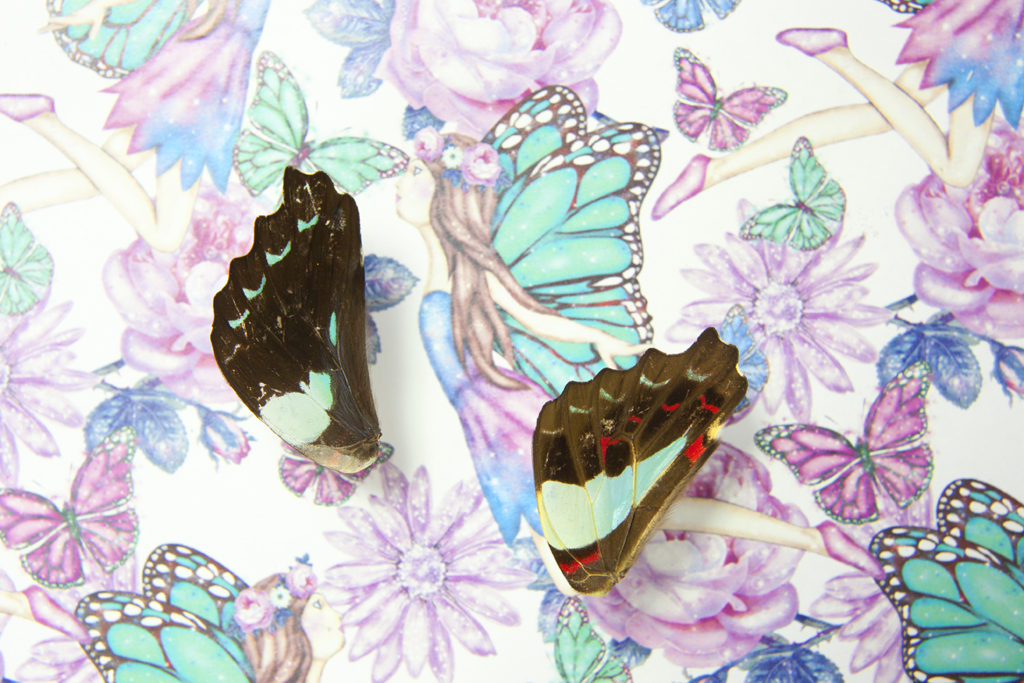
チョウの羽、アクセサリーの素材として Butterfly wing for DIY accessories(E-commerced Animals)
-As is the case with the series of the dead animals, the concept of your photographic works seems to be very distinctive and significant, how do you usually come up to these ideas?
It is very interesting for me to try to overturn or question the common sense that I have inside of me. In the project “Gibier-the dead animal portrait”, I questioned the common sense
within myself. Like “Is it true we shouldn’t kill living things?
It’s interesting to note the contradiction between thinking “I don’t want to kill animals” in real life, but thinking “this meat tastes good” at daily dining table or wearing leather goods. In Buddhism,
which is believed in Japan, there is a Buddhist commandment “not to take the life of any living thing (including animals or insects)”, and I feel that there is a special sense of aversion to “killing”
even nowadays, because of the consciousness of guilt over the perpetration of World War II.
While visiting French taxidermy studios and hunters, I met people who claimed to “love animals” but enjoyed killing them. This is different from the way of thinking in Japanese Buddhism, but I
believe that hunters love animals in the natural environment, and pitting human beings and animals as equal creatures against each other in a battle comparing wits between “animal wisdom” and
“their own wisdom” At an animal market in the French countryside, I posed a question “Is this an edible animal?” When I was told “All animals can be eaten. You decide yourself whether you want
to eat it or not”, I felt like I had a much broader perspective.
−動物の死体を扱ったシリーズなど、コンセプトが非常に独特かつ意義深い印象を受けますが、こういった独自のアイデアはどのように思いつくのでしょうか?
自分の中にある常識を覆してみたり疑ってみることが、自分にとってとても面白いことだといえます。この作品「Gibier-The dead animal portrait」では「生き物を殺してはいけないというのは本当か?」と自分の中
の常識を疑ってみました。
実際の生活では「動物を殺したくない」などと考えつつも、日々の食事の場面では「この肉おいしい」と思っていたり、皮革製品を身につけたりすることの矛盾が、面白いと言えます。日本で信仰されている仏教におい
ては「動物、小さな昆虫の命を含む一切の生きとし生けるものの命を奪うことをしてはいけない」という不殺生戒というものがあったり、第二次世界大戦の加害に対する罪の意識から、現代においても「殺す」というこ
とについて特別な忌避感が日本人に根付いていると感じます。
フランスに剥製工房やハンターを訪ねたところ「動物が好き」と言いながらも動物を殺すことを楽しんでいる人たちに出会いました。日本の仏教における考え方と異なりますが、ハンターたちは自然環境の中で、人間と
動物を対等のいち生物として「動物の知恵」と「己の知恵」を戦わせ知恵くらべをしながら動物を愛しているのではないかと思います。フランスの田舎町の動物市場で「これは食用の動物ですか?」と尋ねたところ、
「動物はすべて食べられる。食べるかどうかはあなたが決めなさい」と言われ、より視野が広がったように感じました。
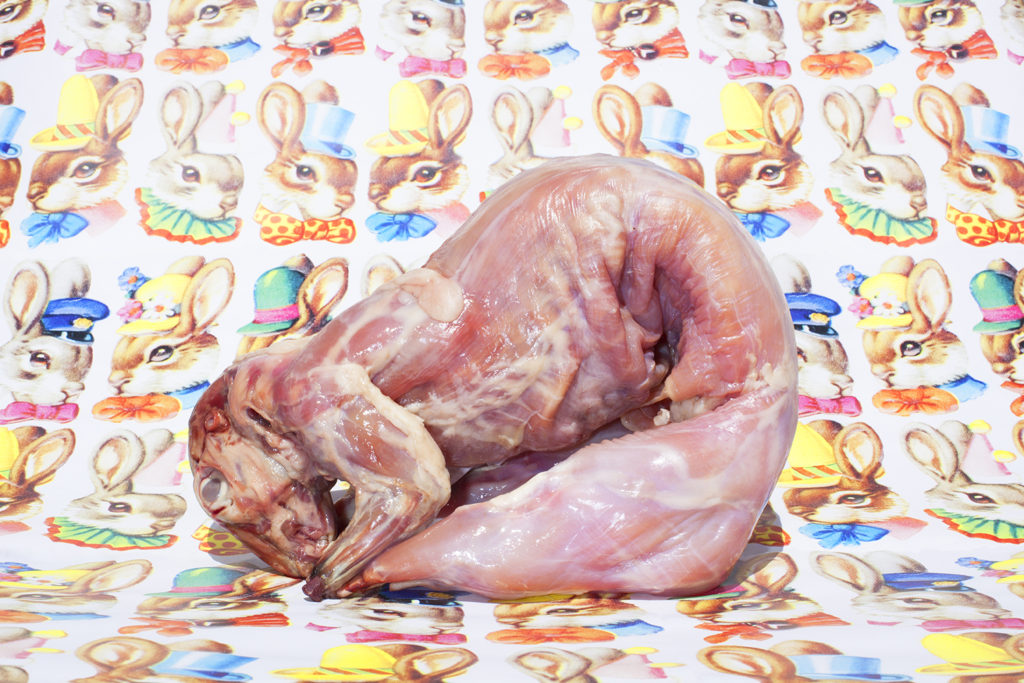
ウサギ、食材として Rabbit for human eat (E-commerced Animals)
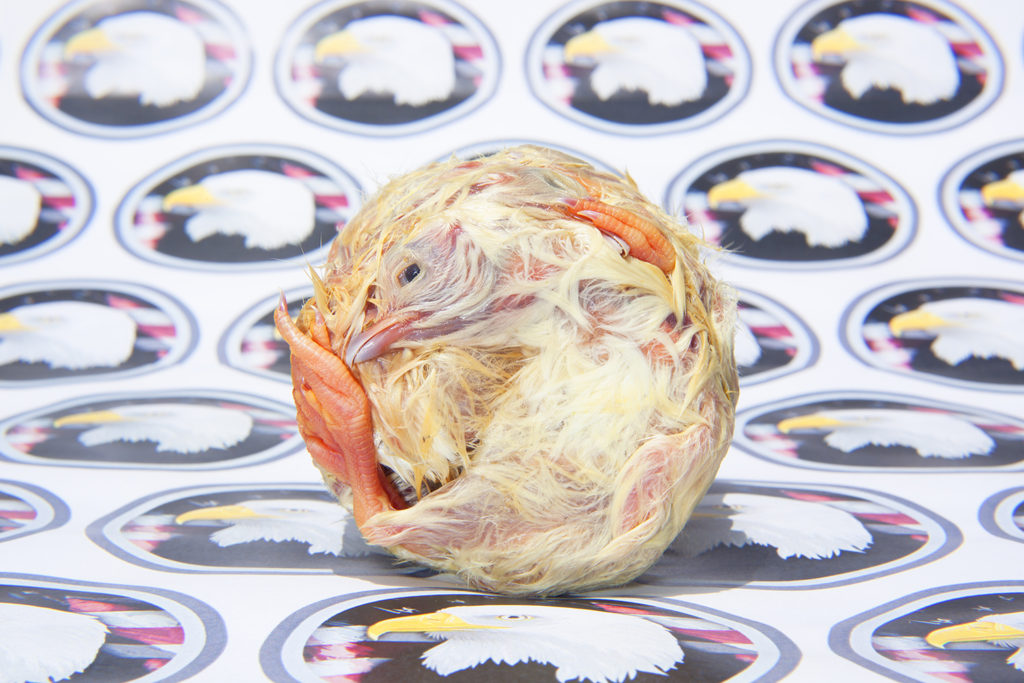
ヒヨコ、タカのエサとして Chick as bait for pet eagle(E-commerced Animals)
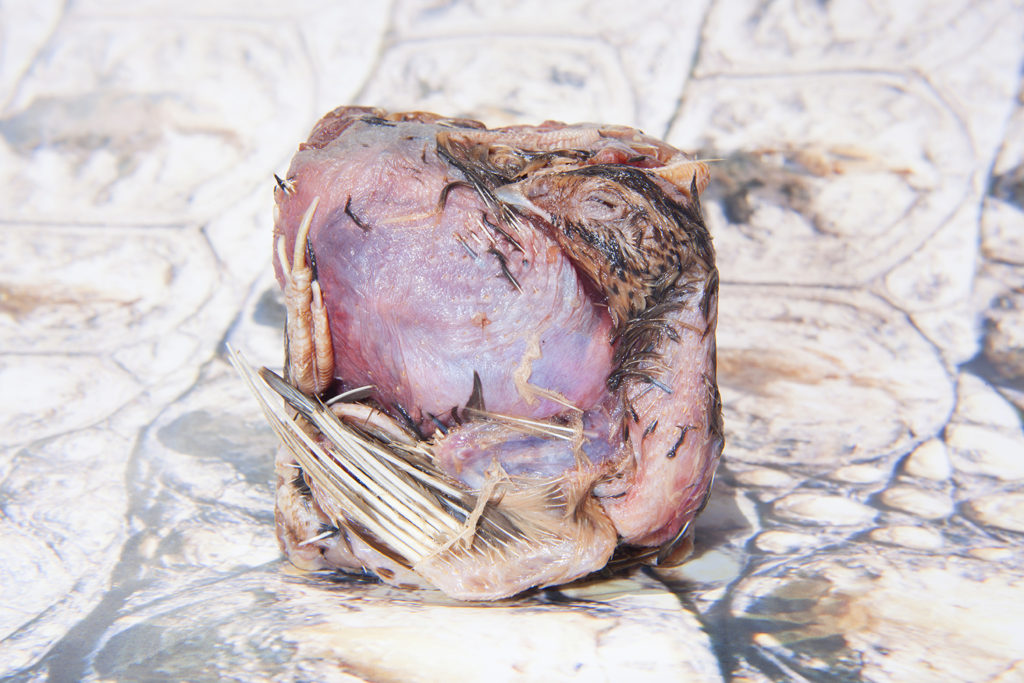
ウズラ、ワニの餌として Quail as bait for pet crocodile (E-commerced Animals)
-In many of your works, the contrast between the light and the darkness is very impressive. What makes you have this preference of representation you make?
In the “Gibier-the dead animal portrait” project, I practiced a light painting technique using a flashlight in a darkened room, illuminating each part of the dead animal’s body, but it is also a very
effective technique in the sense that it visualizes an invisible “mystery”. In the creation of this work, I studied the effects of lighting by looking at many Christian religious paintings at the
Gemäldegalerie, Berlin. I’ve noticed that characters in paintings such as Christ have light sources that deliberately created and would not have been possible under natural circumstances, and
that form a “mystery” to their appearance.
In “E-commerced Animals,” the lighting is applied in a way that expresses the “productiveness” of the animals without giving them too much light or dark.
−多くの作品では光と闇の対比がとても印象的ですが、こういった表現へのこだわりには何か理由がありますか?
「Gibier-The dead animal portrait」では真っ暗にした部屋で、懐中電灯を使ったライトペインティングの手法で、死んだ動物の体の部分ごとに照らしていますが、目に見えない「神秘性」を可視化するという意味で
非常に有効的な手法だといえます。この作品の制作においては、ベルリンの絵画館で、多くのキリスト教の宗教絵画を見てライティングの作用を研究しました。キリストなど絵画の中の登場人物には自然の環境下ではあ
り得ないような光源が意図的に作られており、それが見た目に「神秘性」を形成していることに気づきました。
「E-commerced Animals」では動物に明暗をあまりつけず「商品らしさ」を表現するようなライティングを施しています。
食材としてのキンケイ・フランス Golden Pheasant to eat in France (Gibier-The dead animal portrait)
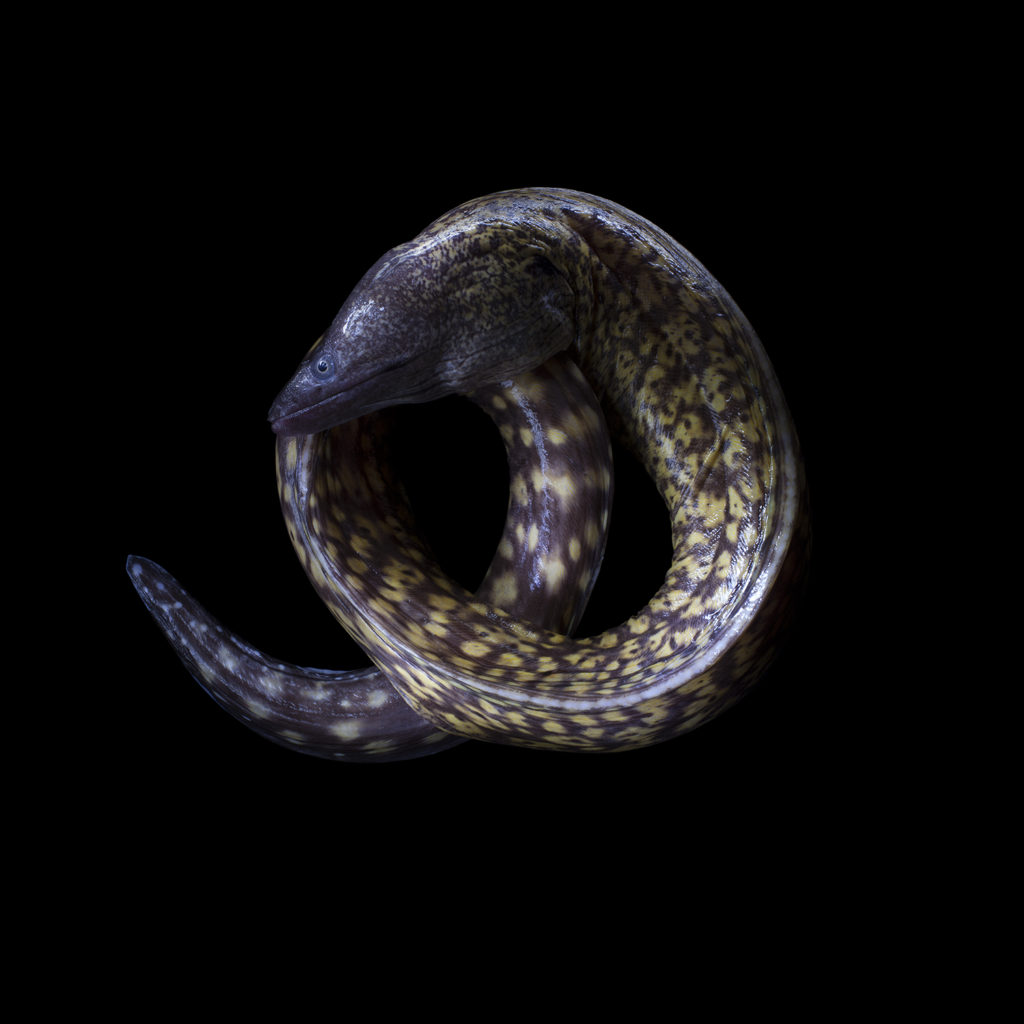
食材としてのウツボ・スペイン Moray to eat in Spain (Gibier-The dead animal portrait)
-What part of the creative process do you enjoy most, and what do you find most challenging?
It’s very exciting to have “actual experience”. It can be said that “photographic works” are a medium that is accompanied by actual experience, since they cannot be created without seeing the
actual site or the actual thing.In these two projects that dealt with animals, I had to face the dead bodies of the animals. I believe that photography is different in this respect from other mediums
such as writing and painting, which can be expressed through one’s own imagination.
And I think that the expression of a photograph using real animal carcasses will leave a stronger impression on the viewers. Killing and eating an animal myself was a very important real-life
experience against the contradiction of thinking that you don’t want to kill an animal even though you are eating meat.
−制作過程において、最も楽しんでいらっしゃることは何ですか?また、最も難しいと感じることは何でしょうか?
「実体験をすること」はとてもエキサイティングです。「写真作品」は必ず現場や実物を目にしなければ制作できないので、実体験を伴う媒体であるといえます。動物を扱った2つの作品においては、動物の死体を目の
前にする必要がありました。自らの想像力で表現が可能な文章や絵画などの表現媒体とはこの点で異なると思っています。
そして動物の死体の実物を使った写真という表現は、観賞者にもより強い印象を残すことになると思います。肉を食べているにもかかわらず、動物を殺すのは嫌だと思っている矛盾に対して、自ら動物を殺して食べたこ
とは非常に重要な実体験となりました。
– What is the source of inspiration for your photography?
Among the five senses, the only way to capture a “photograph” is through “sight”. I find it interesting to reconstruct within myself what I have gotten from not only “sight” but also “hearing”,
“touch”, “taste” and “smell” and put them into visual expression.
A friend of mine from childhood is a French chef, and I wondered how a chef can describe the carcass of an animal as a dish that can be felt by all five senses, whereas a photograph that can only
be felt by the “visual”? That was the thought behind the creation of “Gibier – The dead animal portrait”.
In my daily life, I like cooking and growing plants and enjoy the touch and smell of them. It’s interesting to me that when I use spices and herbs to make foreign dishes, it brings me back vivid
memories of places I once visited or even reminds me of local life that I’ve never been to.
−写真制作におけるインスピレーションは何ですか?
五感の中では「視覚」でしか「写真」をとらえることはできません。「視覚」だけでなく「聴覚」「触覚」「味覚」「嗅覚」から得たことを、自分の中で再構築して視覚表現に落とし込むことが面白いと感じています。
子供の時からの友人がフランス料理のシェフをしており、料理人が動物の死体を五感全てで感じることができる料理に仕上げるのに対して、「視覚」でしか感じることができない写真ではどう表現できるだろうか?
という思いが「Gibier-The dead animal portrait」の制作ではありました。
日常生活の中では料理をすることを楽しんでいますし、植物を育てて手触りや匂いを楽しんでいます。香辛料やハーブを使って外国の料理を作ると、かつて訪れた場所の記憶が鮮明に思い出されたり、行ったことのない
現地の生活に思いが及んだりするのが面白いです。

キツネの皮、マフラーとして Fox fur scarf (E-commerced Animals)
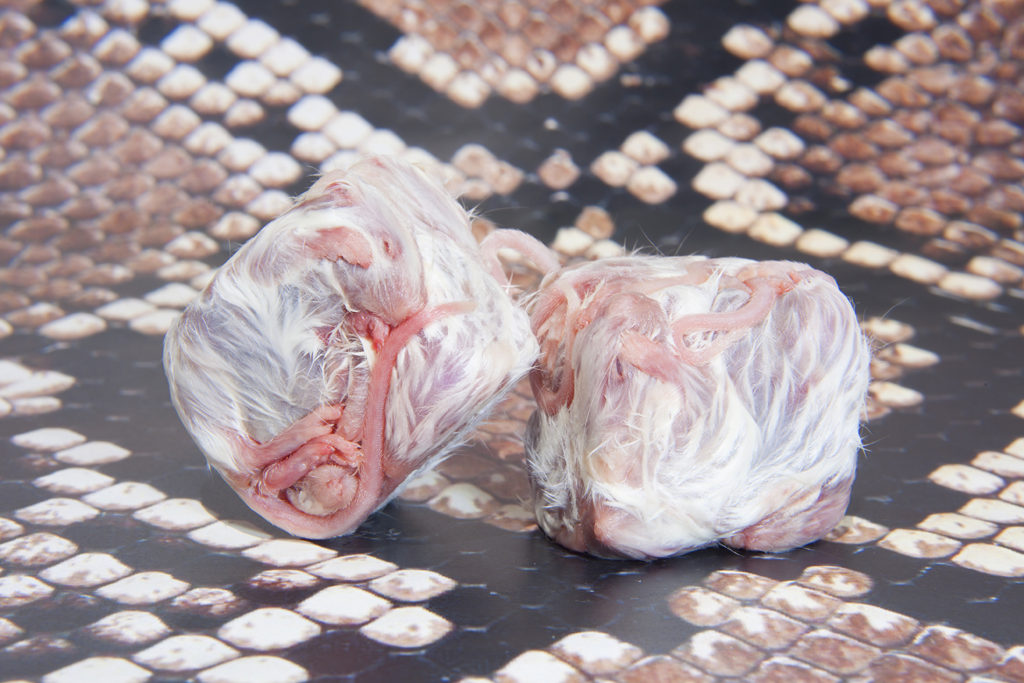
ネズミ、ヘビのエサとして Adult mouse as bait for pet snake (E-commerced Animals)
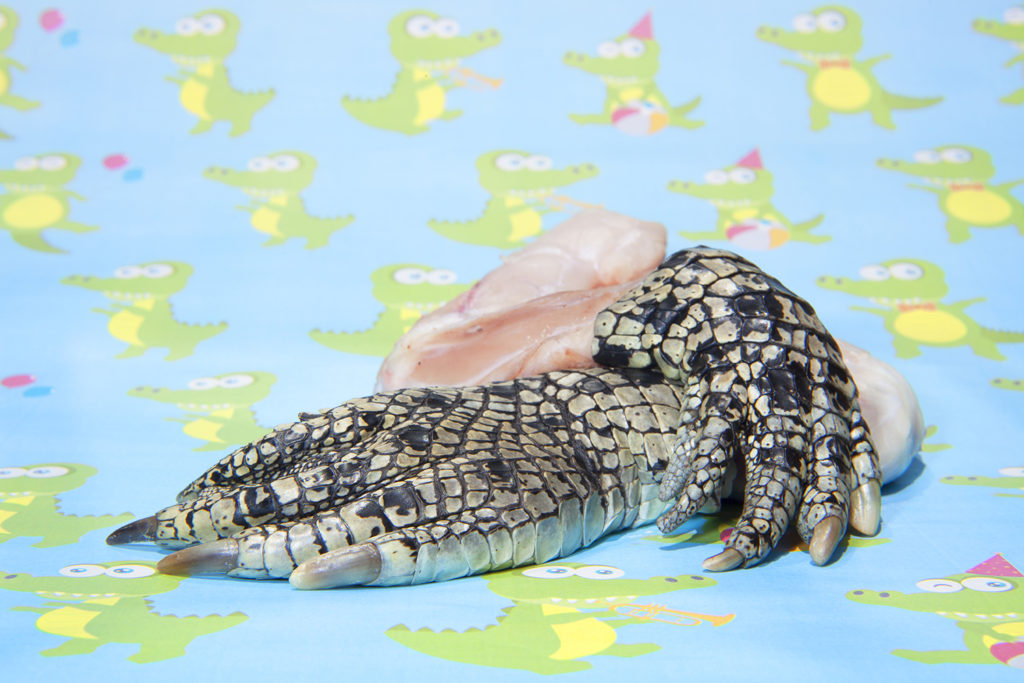
ワニの足、食材として Crocodile leg for human eat (E-commerced Animals)
-Do you have any particular preference regarding cameras (equipment) you use?
When creating a work of art, I have concrete visuals in my mind before I create it, so digital equipment is more useful for reproducing them. You can also check the images on the spot to some
extent. I find it interesting that with digital data, there is a variety of ways to present it, including locations and media. For example, when I exhibited at a photo festival in China or Georgia(former
Soviet Union) or a gallery in New York, I just sent the print data beforehand and soon the exhibition was all ready at the spots…Also, at the museum in Los Angeles and photo festivals in the south
of France and Amsterdam, they held the exhibition as a slide show on the big screen. In fact, it’s interesting that when you publish on the web, you get reactions from different parts of the world.
Because photographic works can vary in size and location to display, I try to create images that will leave a lasting impression in any situation or location, such as on small screens of smartphones
or having exhibitions of prints.
−使用しているカメラ機材に何かこだわりはありますか?
作品制作においては、具体的なビジュアルが頭に浮かんでから制作をするので、それらを再現するにあたってはデジタル機材の方が有用です。その場で画像をある程度確認もできます。デジタルデータだと場所や媒体
など発表方法が多様化するのが面白いと感じます。実際、中国やジョージア(旧ソ連)での写真祭や、ニューヨークのギャラリーへ出展する時もプリントデータを事前に送ると現地で展覧会が仕上がっていたり、ロサ
ンゼルスの美術館、南仏やアムステルダムの写真祭では大画面でのスライドショー上映会になっていたり、ウェブ媒体に発表すると世界中の様々な場所から反響があるのが面白いですね。
発表の場所や画像の大きさが様々に変えることができる写真作品だからこそ、作品イメージ作りにおいてはスマートフォンの小さな画面で見たとき、プリント作品で展覧会を行ったとき、いかなる状況や場所で見ても
らっても印象に残るように心がけています。
-Is there any artist or photographer that has inspired your works?
JR(1983-), Richard Mosse(1980-)and more.
While smart phones, Facebook and Youtube are becoming more and more popular all over the world, and there is an environment where the people are free to publish their photos anytime and
anywhere, I wondered “What can a photographer do? Then around 2009, I came to feel uncomfortable about straight documentary photography and started “Gibier-The dead animal portrait”
project.
When JR, a French artist who develops street art using photography, created works in the slums of Nairobi and won the World Press Photo contest in 2010, or after seeing Irish Photographer Moss’
work on infrared film about the civil war in the Democratic Republic of Congo, in which the green grass and trees were turned red to make a stronger impression, I was all the more inspired to
create artworks with documentary factors.
The challenge for me is not to take what I could see in front of me as it is, but to interpret it in my mind and express it visually. In recent years, as the bar of using and presenting a camera has been
lowered, I think photographers and artists are being asked to have a sharper perspective.
−作品制作に影響を受けたアーティストや写真家はいらっしゃいますか?
JR(1983-)やリチャード・モス(Richard Mosse 1980-)です。
「スマートフォンやFacebook、Youtubeが世界中で活用され始め、世界中のあらゆる場所で一般の人たちが写真を自由に発表できる環境がある一方、写真家は何ができるだろう?」と2009年頃からストレートなドキ
ュメンタリー写真について違和感を持ち始め「Gibier-The dead animal portrait」の制作を始めました。
そんな中で、写真を使ったストリートアートを展開するフランスのアーティストであるJRが、ナイロビのスラム街で制作した作品が2010年に世界報道写真賞に入賞したり、アイルランド出身のモスがコンゴ民主共和国
の内戦を赤外線フィルムで緑の草木を赤くして印象を強めた作品を見て、ドキュメンタリー性を持たせたアート作品を作っていきたい、とさらに思いを強めました。
「目の前に見えることをそのまま写しとるのではなく、いったん自分の中で解釈してビジュアルとして表現すること」が自らの課題となりました。近年ではカメラを使うことや発表のすることのハードルが下がる中、
写真家やアーティストはより鋭い視点が求められていると思います。
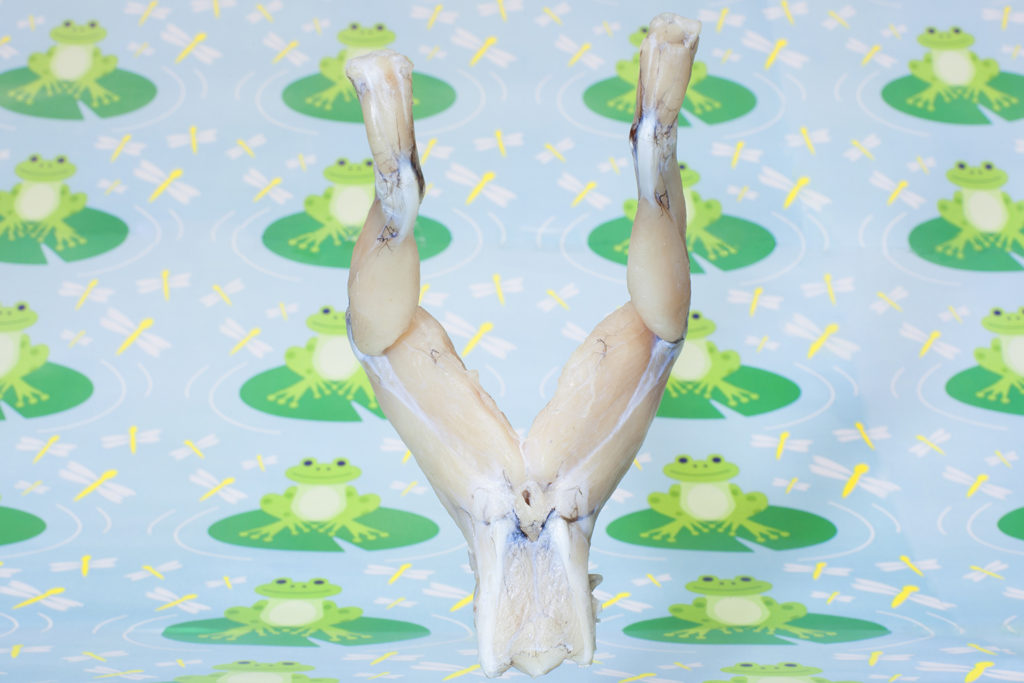
カエルの足、食材として Flog leg for human eat (E-commerced Animals)
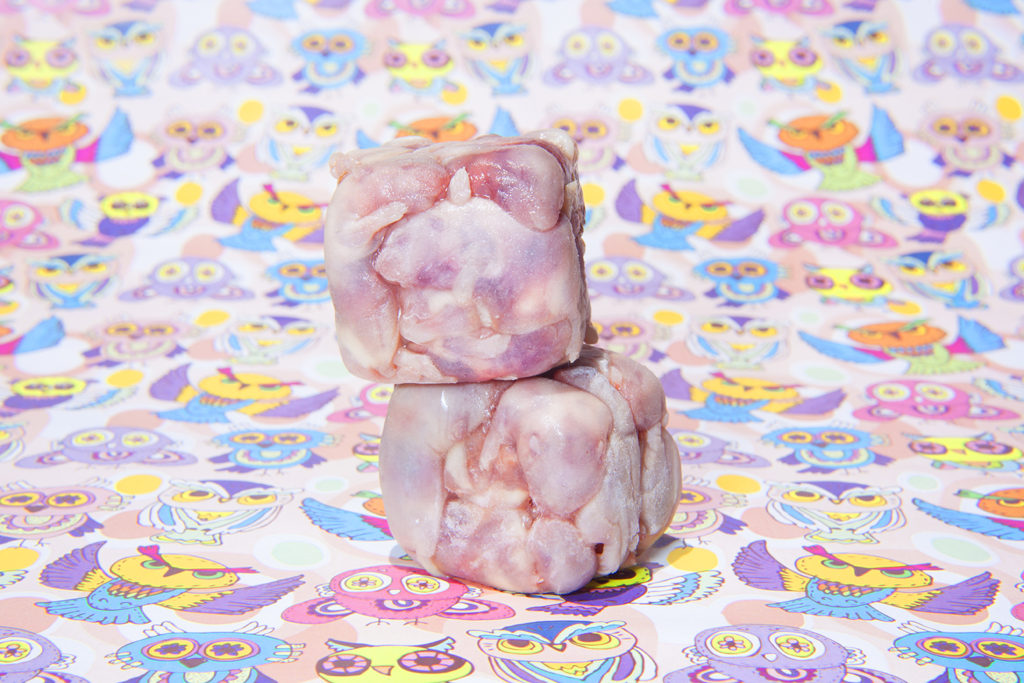
ネズミの子供、フクロウのエサとして Baby mouse as bait for pet owl (E-commerced Animals)
-Are you currently working as an artist? Or do you also do editorial, advertisement and other commercial works?
In addition to creating art, I also do commercial photography and graphic design. Since I see myself as a visual expert, if I express the appeal of a client’s product or service, it becomes a commercial
photograph, and if I myself have something that I want to present to society, it becomes a work of art. There was even a plan to photograph a luxury car using the lighting techniques I had
developed through “Gibier-The dead animal portrait” project.
I am also working on a digital restoration project for photographs of Hollywood actor James Dean (1931-1955) taken in 1955. As a project manager, I do everything from photo restoration work to
publicity and planning, and from December 2019-April 2020 I was able to show those prints in the exhibition at the art gallery in Berlin.
−主にアーティストとして活動されていますか? もしくは雑誌や広告などのお仕事もされていますか?
アート作品の制作だけでなく、商業写真の撮影やグラフィックデザインも行っています。自分自身を視覚の専門家として捉えているので、クライアントの商品やサービスの魅力を表現すれば商業写真となり、自らが発端
となって社会に対して提示したい事柄があればアート作品となります。「Gibier-The dead animal portrait」の制作で培ったライティング手法を使って高級車を撮影するというプランもあったくらいです。
また1955年に撮影されたハリウッド俳優ジェームズ・ディーン(1931-1955)の写真のデジタル修復プロジェクトを行っています。プロジェクトマネージャーとして、写真の修復作業だけでなく広報、企画などあらゆる
ことを行っています。2019年12月-2020年4月にはベルリンのアートギャラリーでの企画展にプリント作品を出品することができました。
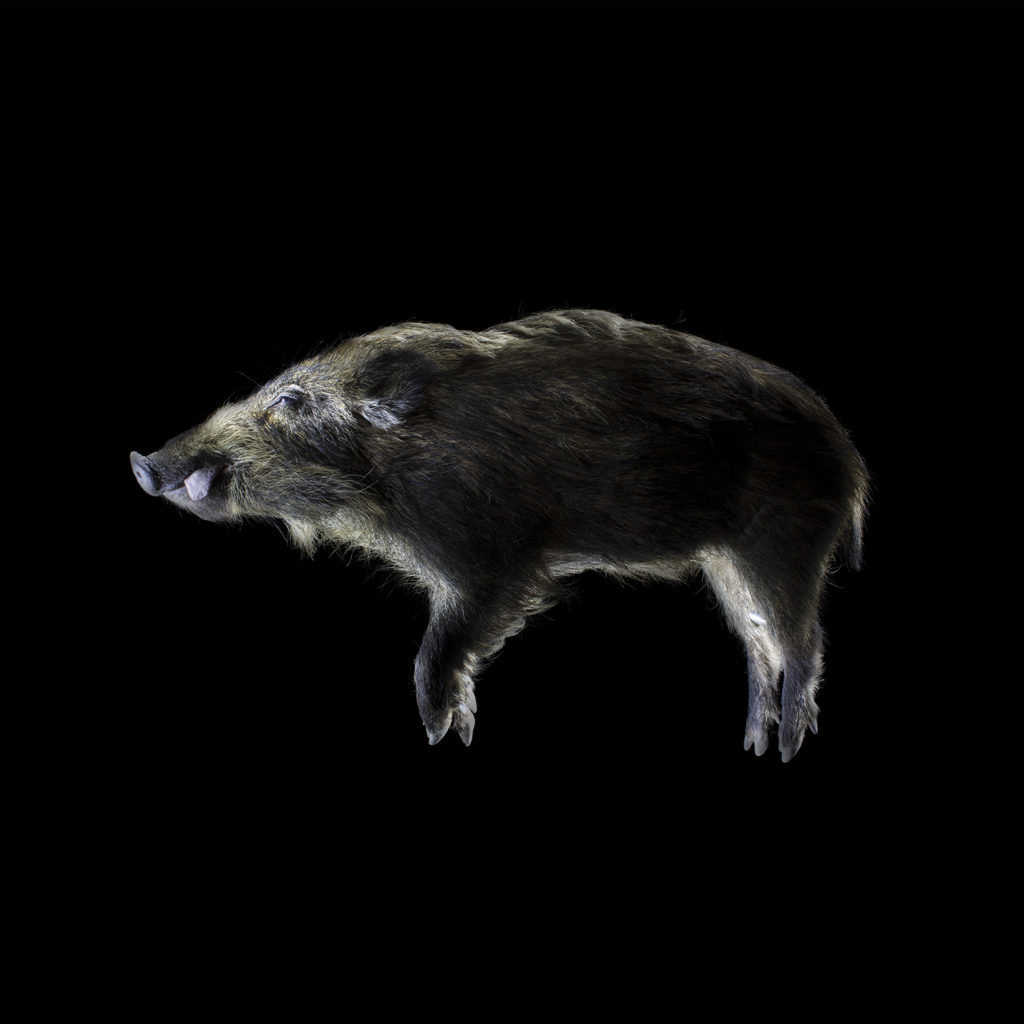
食材としてのイノシシ・日本 Japanese Boar to eat in Japan (Gibier-The dead animal portrait)
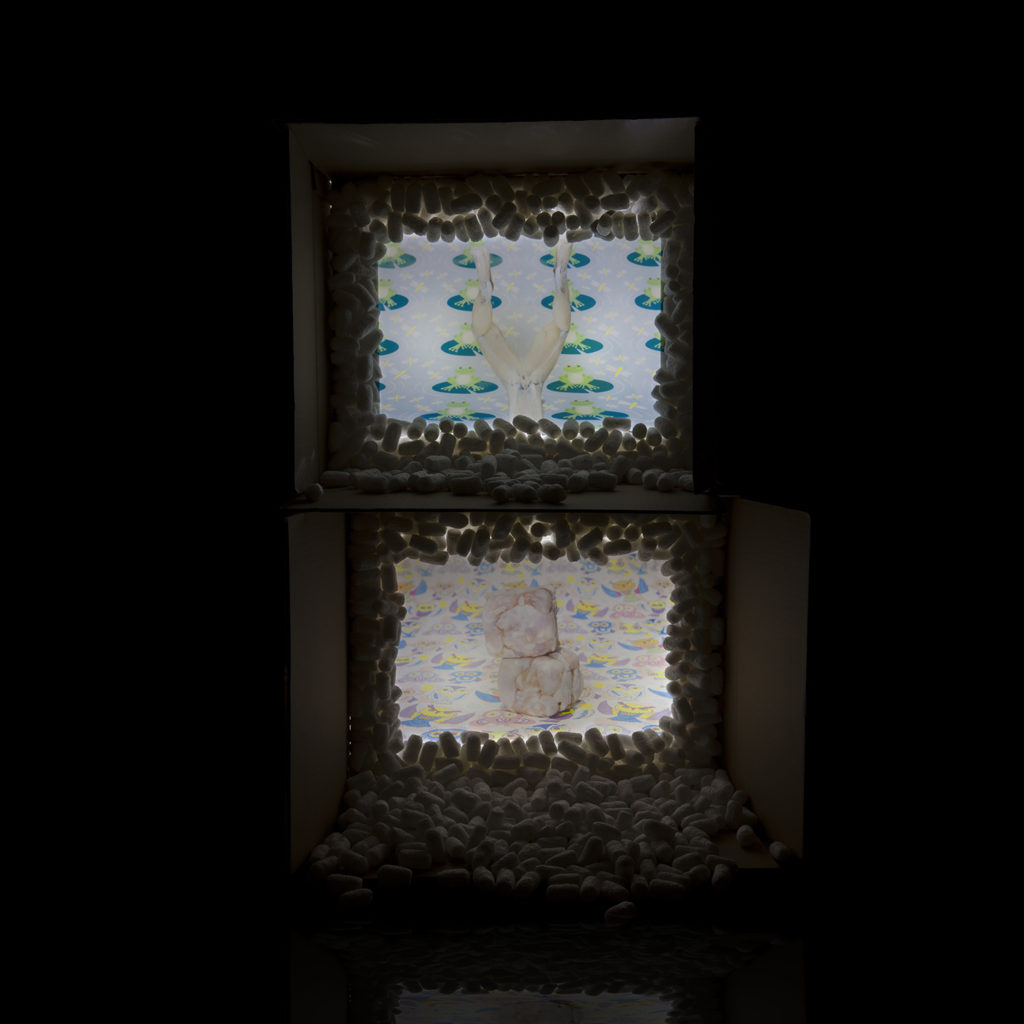
段ボールを使ったインスタレーション In the Installation with cardboard box (E-commerced Animals)
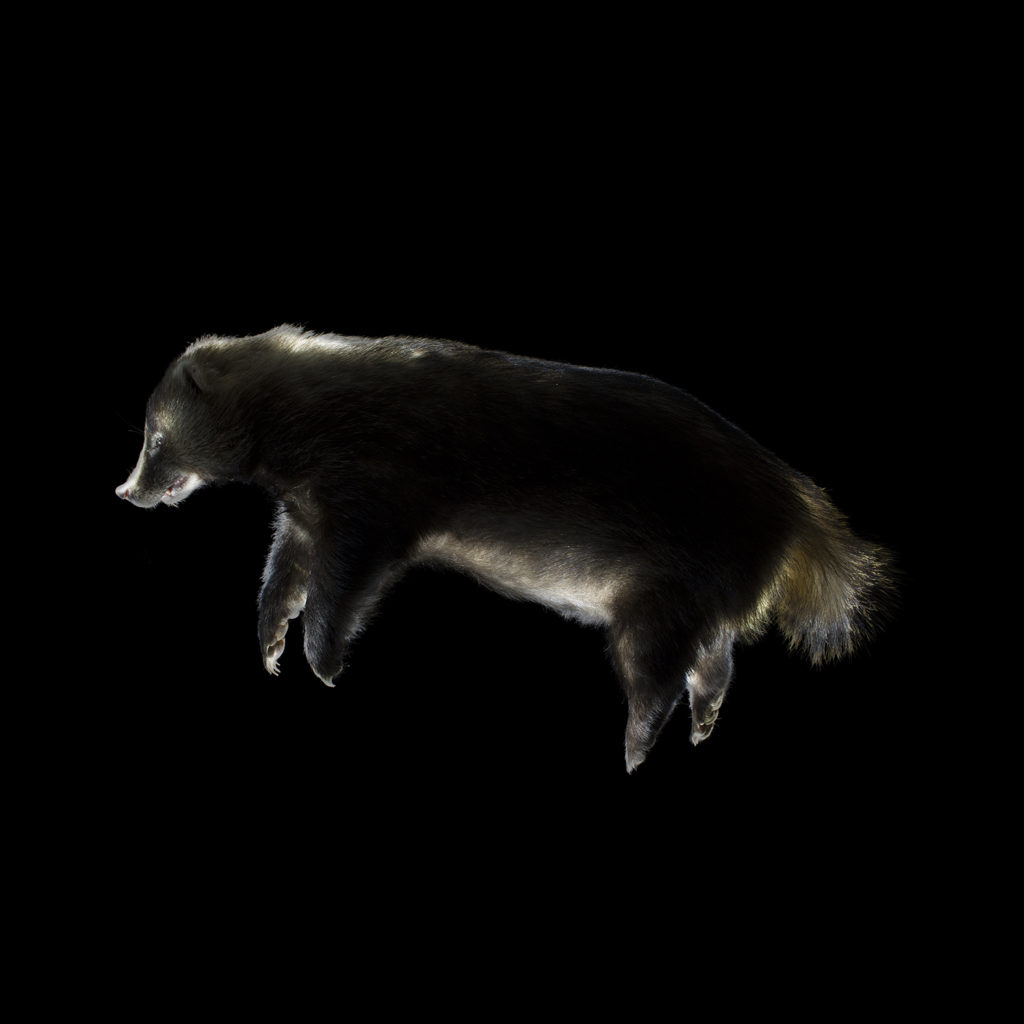
食材としてのアナグマ・日本 Japanese Badger to eat in Japan (Gibier-The dead animal portrait)
– Please tell us if you have something you want to do in the future or any project you already have in mind.
I am interested in clothing that has been passed down from generation to generation, such as ethnic costumes. Having traveled to many different countries, I realized that while ethnic dress is a
cultural thing rooted in the climate and values of each country, it is not something that I wear in my daily life. The experience of seeing someone in Spain wearing the same clothes that I bought in
Korea also gave me an opportunity to think about fast fashion in recent years.
−将来的に何かやりたいことや、今すでに考えていることがあれば教えてください。
民族衣装など世代を越えて受け継がれる衣服に興味があります。これまで色々な国を旅した経験から、民族衣装などの装いがそれぞれの気候や価値観に根ざした文化的なものである一方、自分自身が日常生活において
身に着けることがないことに気づいたからです。自分が韓国で買った服と同じ服をスペインで他の人が着ているという経験をして、近年のファストファッションを考える機会にもなりました。
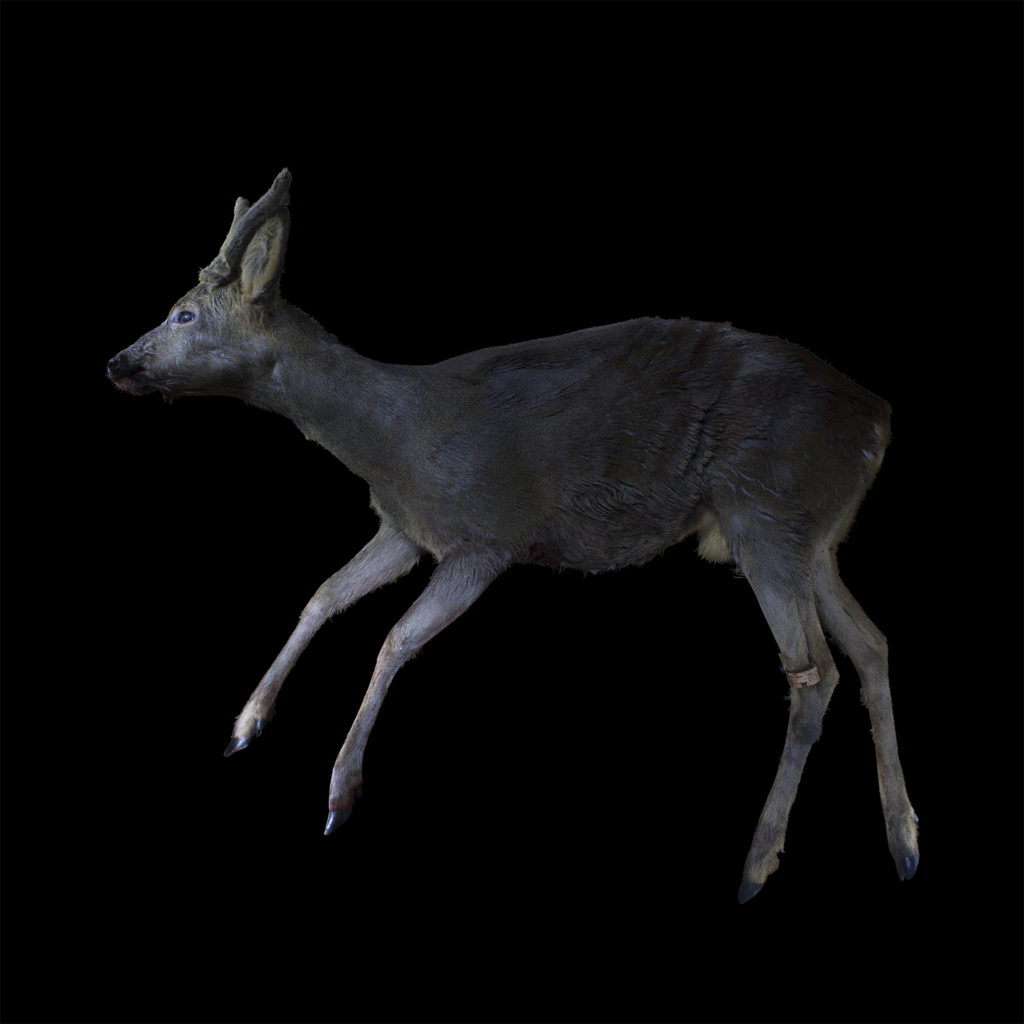
食材としてのシカ・フランス Deer to eat in France (Gibier-The dead animal portrait)
Tomofumi Nakano (b. 1978, Hyogo, Japan) has worked as a newspaper editor and a news photographer for the European pressphoto agency (EPA), and now creates artworks from a critical
perspective on society that he has cultivated through journalism. His press photos have appeared in media around the world, including the New York Times and the Guardian in the UK.
As an artist, he has exhibited at the Pingyao international photography festival (China), the Lishui photo festival (China), and the Kolga Tbilisi Photo (Georgia), and his slideshows have been
shown at the Annenberg Space for Photography (Los Angeles) and Unseen Photo (Amsterdam). His work has also been published in GUP Magazine (Amsterdam) and Quo Magazine (Madrid).
Website: http://www.tomofuminakano.com/
中野智文(兵庫県 1978年-)は、新聞の編集者、EPA通信(European pressphoto agency)での報道カメラマンを経て、現在はジャーナリズムで培った社会への批評的な視点でアート作品の制作をおこなっています。
彼の報道写真は、アメリカ・ニューヨークタイムズ(The New York Times)やイギリス・ガーディアン(The Guardian)など世界各地のメディアに掲載されました。
アート作品においては、これまで平遥国際写真祭(中国)、麗水写真祭(中国)、コルガ・トビリシ写真祭( ジョージア)で展覧会を行うほか、アネンバーグ写真美術館(ロサンゼルス)、Unseen photo(アムステルダ
ム)などでもスライドショー上映されています。また、GUPマガジン(アムステルダム)やQuoマガジン(マドリッド)などにも掲載されています。
ウェブサイト http://www.tomofuminakano.com/



